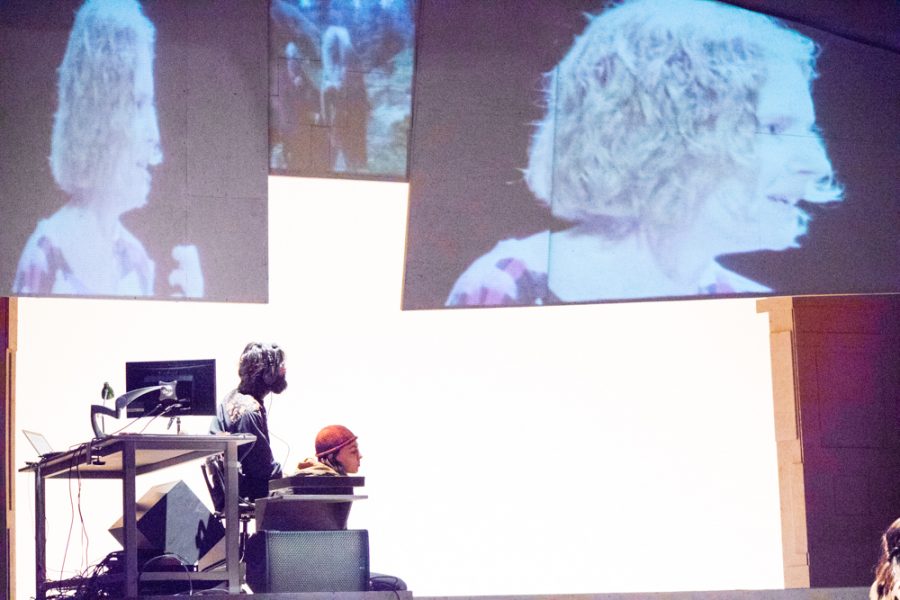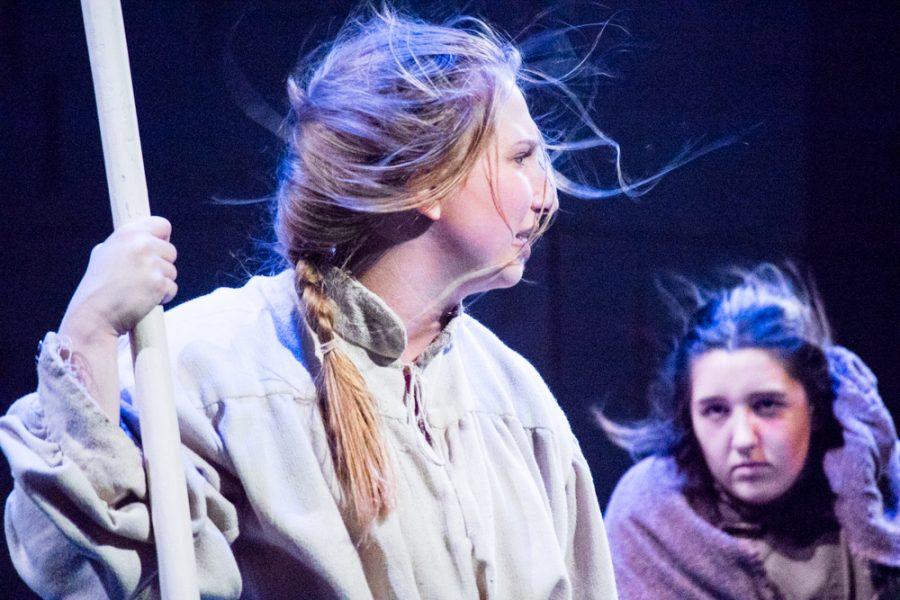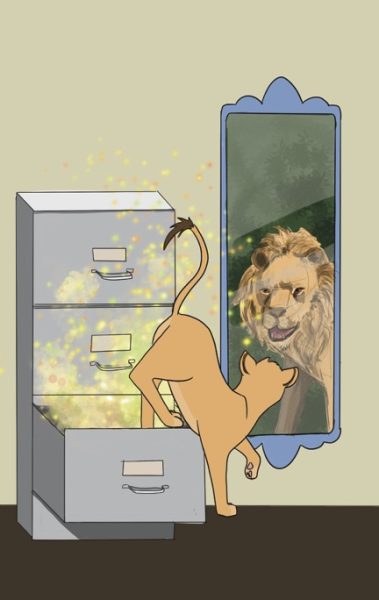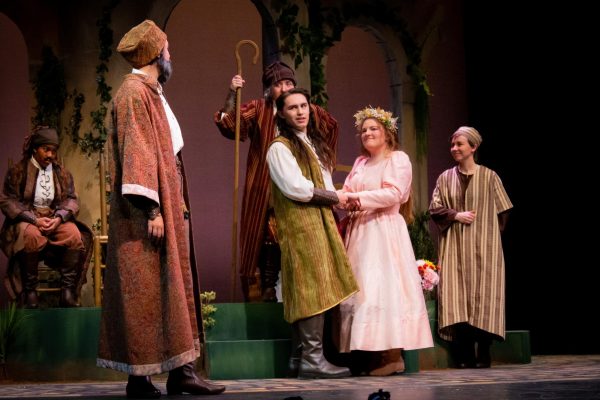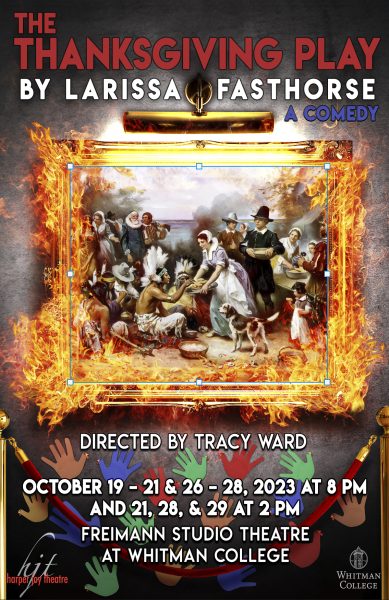Harper Joy’s “A King Lear” brings mixed media, innovation to Shakespearean text
March 9, 2017
The traditional and rich language of Shakespeare, combined with modern forms of mixed media, filled the stage in Harper Joy Theatre’s production of “A King Lear.” The play, performed first for Encounters classes before playing to regular weekend audiences, was an adaptation of Shakespeare’s “King Lear,” with some text cut and technology added.
Directed by Professor Christopher Petit, “A King Lear” was the senior project of Delio Antonio Fernandez, Emily Huntingford and Grace Starr, and it was a big production. Four guest designers worked on the show, and Fernandez directed the addition of media and technology elements.
Sophomore Dani Schlenker, who portrayed Regan, shared her thoughts on why the play was adapted in such a non-traditional manner.
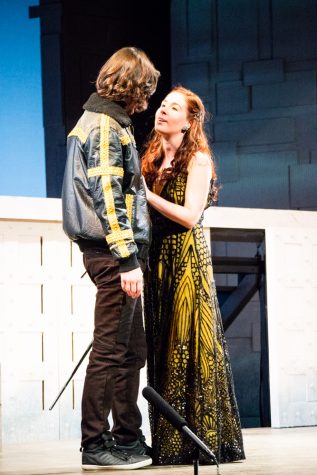
“I think that the director was really trying to make the script accessible for first years,” Schlenker said. “It’s an interesting way to take this … play and try to make it something that can be very engaging for people who aren’t really used to seeing theater all the time.”
Video footage of several Encounters professors, who offered insights into the play, were projected at various points during the show, as were especially critical lines. Music and sound effects added to the intensity of moments. Fernandez sat on stage for the entire duration of the play, controlling all of this media. Sophomore Donovan Olsen, the stage manager, spoke to this important aspect.
“Probably the biggest challenge for me as a stage manager is keeping track of all those moving parts,” Olsen said. “It’s been a really interesting learning experience. Just seeing how these practices and technology can be used in theater has been amazing.”
Another intriguing addition to the show was the element of dance, which took place during a storm in the play. Huntingford, who played King Lear, explained that it reflected Lear’s state of mind.
“The dance is a way of completely breaking out of text and making the psychological more real through gestures,” Huntingford said.
This element helped Huntingford convey the madness and powerful emotions of King Lear throughout the show.
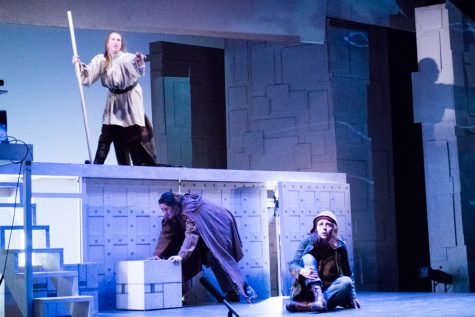
Huntingford and Schlenker both pointed out the difficulty of not getting too gloomy in performing and watching such a tragic show. However, there were humorous moments, intentional or otherwise. During the first performance for Encounters classes, a blood packet accidentally sprayed the wrong actor, eliciting appreciative laughs from the audience.
“The atmosphere at the beginning of the play was [like] people were just there for class,” Schlenker said. “Then this scene happened, people laughed, and it really opened it up and it felt like people received it very well.”
Huntingford was glad that humor could be found in the midst of such a tragic play.
“I think laughter is a response to things that people have such a visceral reaction to, or sometimes you don’t know how to respond to things that make you uncomfortable and so you laugh,” Huntingford said.
An often-asked question about Shakespeare is why his plays are still relevant and being performed. Ruby Daniel, a first-year who played Cordelia, explained her take on it.
“The play is about power, and it’s about growing old, and it’s about what is your true nature and what is your relationship to your parents,” Daniel said. “The stories that [Shakespeare] tells are about very basic human problems; they’re just told through beautiful, rich language that we get to explore.”
Building upon that view, Huntingford brought to light the ability to connect with characters and situations that seem unrelated to the viewer.
“In a way, it’s an exercise in empathy,” Huntingford said. “Something that seems so distanced from us isn’t actually … Youth and old age isn’t actually that separate.”
With that in mind, “A King Lear” was a very comprehensible, moving show made accessible and more compelling to a broader audience by an increased use of technology and very invested, hardworking actors.



